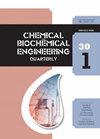The Unique Structure–Activity Relationship of Porphyrins and Clay Mineral Systems in Modern Applications: A Comprehensive Review
IF 1.6
4区 生物学
Q4 BIOTECHNOLOGY & APPLIED MICROBIOLOGY
引用次数: 0
Abstract
Porphyrins are a group of organic heterocyclic macromolecules, composed of four modified pyrrole subunits interconnected at their α carbon atoms via methine bridges. This unique and significant group of compounds has a special relationship with inorganic clay minerals, which are hydrous aluminium phyllosilicates. Clay minerals, known to be typical layered materials, act as unique hosts for porphyrin molecules or their precursor materials. When the porphyrin compound enters between the layers of a clay, it can orient horizontally, diagonally, or perpendicularly. Cation-exchanged clay can provide the acidity required for the formation of porphyrins from its precursor molecules without the need for other auxiliary factors such as heating. Clays are also capable of facilitating the incorporation of various metals into the porphyrin ring to form a metalloporphyrin. The properties of these metalloporphyrin clay complexes have been studied extensively. Modern applications of such clay-porphyrin materials include their use as heterogeneous catalysts for oxidation and polymerization reactions in the synthesis of new materials. These heterogeneous catalysts have a wide range of uses in vital sectors, such as food manufacturing, pharmaceuticals, and the chemical industry. Additionally, clay-porphyrin systems are employed in constructing various types of self-assembling artificial photo-synthesis systems.现代应用中卟啉和粘土矿物体系独特的结构-活性关系:全面回顾
卟啉是一组有机杂环大分子,由四个经过修饰的吡咯亚基通过甲桥在其 α 碳原子上相互连接而成。这组独特而重要的化合物与无机粘土矿物有着特殊的关系,无机粘土矿物是水合铝植硅酸盐。粘土矿物是众所周知的典型层状材料,是卟啉分子或其前体材料的独特宿主。当卟啉化合物进入粘土层之间时,它可以水平、对角或垂直定向。阳离子交换粘土可提供卟啉前体分子形成所需的酸性,而无需加热等其他辅助因素。粘土还能促进各种金属与卟啉环结合,形成金属卟啉。人们对这些金属卟啉粘土复合物的特性进行了广泛的研究。这类粘土卟啉材料的现代应用包括在合成新材料时用作氧化和聚合反应的异相催化剂。这些异相催化剂在食品制造、制药和化学工业等重要领域有着广泛的用途。此外,粘土-卟啉系统还可用于构建各种类型的自组装人工光合成系统。
本文章由计算机程序翻译,如有差异,请以英文原文为准。
求助全文
约1分钟内获得全文
求助全文
来源期刊
CiteScore
2.70
自引率
6.70%
发文量
23
审稿时长
>12 weeks
期刊介绍:
The journal provides an international forum for presentation of original papers, reviews and discussions on the latest developments in chemical and biochemical engineering. The scope of the journal is wide and no limitation except relevance to chemical and biochemical engineering is required.
The criteria for the acceptance of papers are originality, quality of work and clarity of style. All papers are subject to reviewing by at least two international experts (blind peer review).
The language of the journal is English. Final versions of the manuscripts are subject to metric (SI units and IUPAC recommendations) and English language reviewing.
Editor and Editorial board make the final decision about acceptance of a manuscript.
Page charges are excluded.

 求助内容:
求助内容: 应助结果提醒方式:
应助结果提醒方式:


